Special Populations in Dysphagia Management: COVID-19, Feeding Disorders, Drug Use, and Burn Care
Please enter a valid quantity
Please select a product format
That product is out of stock
BEFORE YOU BUY...
This course is one of more than 750+ CE courses in the ASHA Learning Pass, which gives you unlimited access to more than 1,350 hours of CE content for the cost of just one or two a la carte courses.
*If this is a recent SIG Perspectives course, you must also be a Special Interest Group (SIG) affiliate to unlock it as part of your subscription.
Already an ASHA Learning Pass subscriber?
Login
These four SIG 13 articles provide valuable information in dysphagia practice. In
addition, they offer a unique array of special populations and challenges in patient care
involving swallowing and feeding difficulties. First, Veronica H. Letawsky, Ann-Marie
Schreiber, Camilla Dawson, Geoff Fullerton, Robyn C. Jones, Karyn Newton, Niki
Oveisi, Tahira Tejpar, and Stacey A. Skoretz highlight multisystem considerations for
dysphagia management following critical illness and discuss clinical innovation, as well
as the evolution of practice during the global pandemic. Second, Hema Desai, Sarah
Lauridson, Michelle Nguyen, Elisa Ornelas, and John Schomberg aim to describe and
measure changes in oral feeding skills and mealtime behaviors observed in children with
complex feeding disorders and/or feeding tube dependency after participating in an
intensive and collaborative feeding program. Then, Lauren G. Faust explores how the
use of methamphetamine may have an impact on the oropharyngeal swallow function as
well as treatment participation. Finally, Lori Ann Arguello and Kathleen M. Kerr describe
the mechanism of a facial burn injury and how it may cause functional impairments that
can be directly impacted through early intervention utilizing speech-language pathology
services.
Learning
Outcomes
You
will be able to:
- describe the multiple body systems contributing to dysphagia presentation in
severe COVID-19
- analyze how the use of multiple feeding strategies results in improved feeding
outcomes as reported by parents
- describe changes in feeding behaviors and oropharyngeal swallowing
function that may contribute to dysphagia in individuals who use
methamphetamine
- list three characteristics of family-centered treatment of pediatric feeding
disorder in early intervention
Assessment
Type
Self-assessment—Think
about what you learned and report on the Completion Form how you will use your
new knowledge.
Articles
in This Course
- Proposing a Multisystem Swallowing Framework: A Network Medicine Approach in the
Era of COVID-19 by Veronica H. Letawsky, Ann-Marie Schreiber, Camilla Dawson,
Geoff Fullerton, Robyn C. Jones, Karyn Newton, Niki Oveisi, Tahira Tejpar, and Stacey
A. Skoretz, published in SIG 13, Volume 7, Issue 4,
August 15, 2022
- Feeding Skill and Behavior Changes in Children With Complex Feeding Disorders
Following Therapy in an Intensive Multidisciplinary Feeding Program by Hema Desai,
Sarah Lauridson, Michelle Nguyen, Elisa Ornelas, and John Schomberg, published in SIG 13, Volume 7, Issue 4,
August 15, 2022
- Dysphagia and Methamphetamine Use: Considerations for Speech-Language
Pathologists by Lauren G. Faust, published in SIG 13, August 31, 2022
- Speech-Language Pathology’s Role in Management of Orofacial Contractures After a
Facial Burn by Lori Ann Arguello and Kathleen M. Kerr, published in SIG 13, September 8, 2022
|

